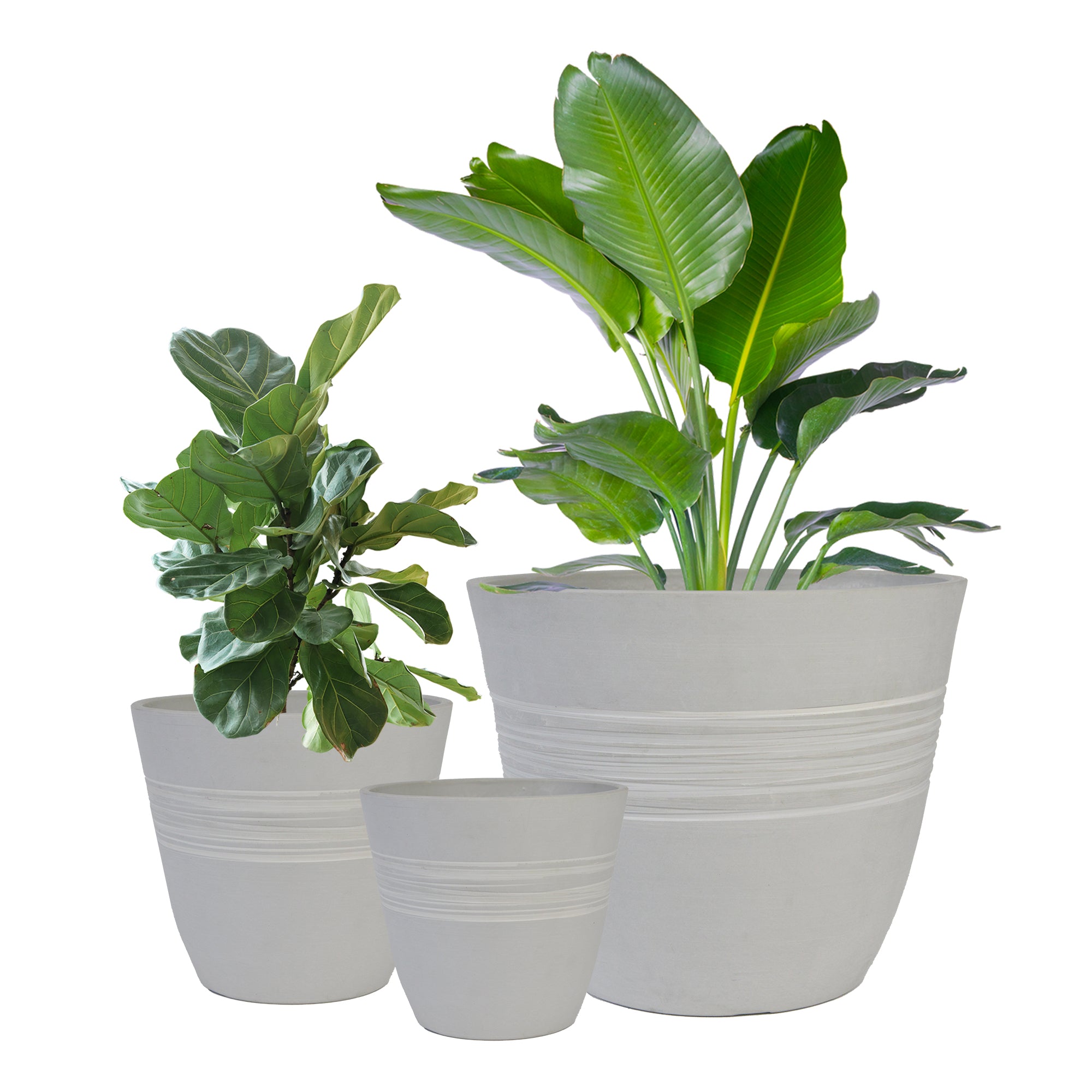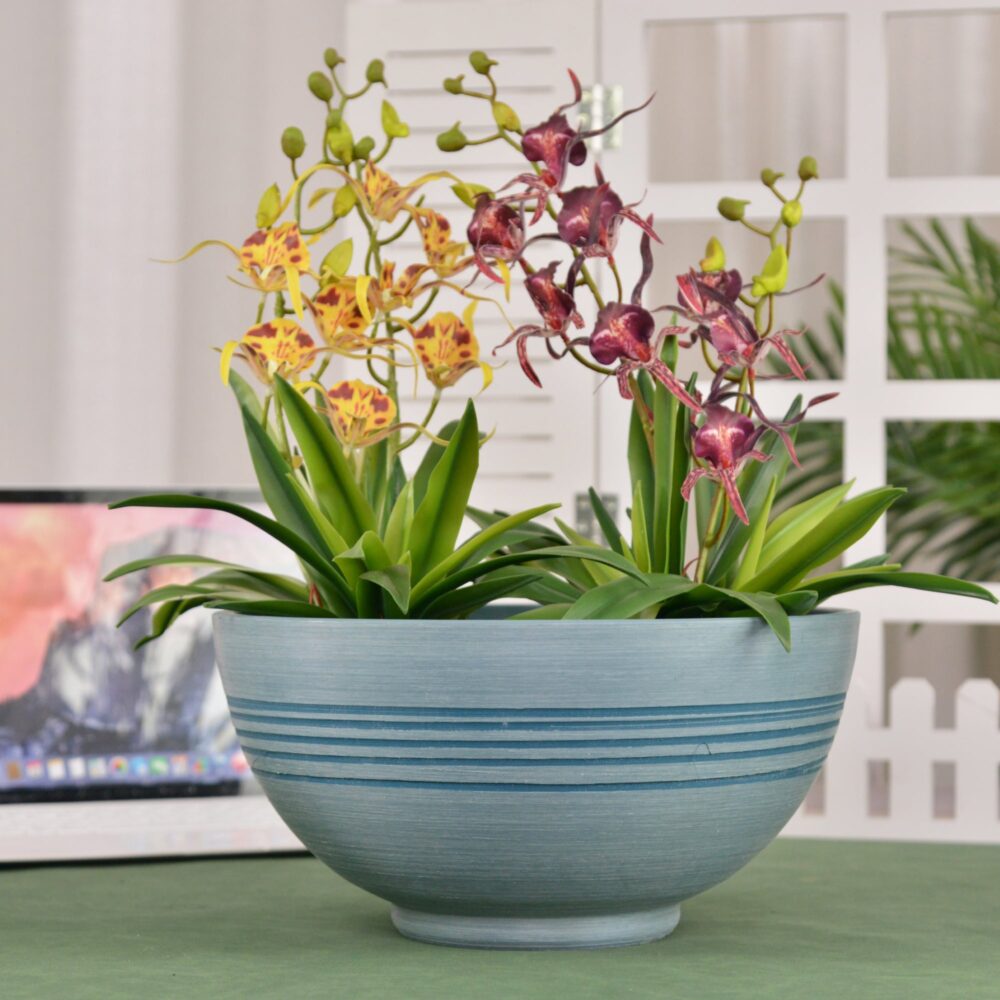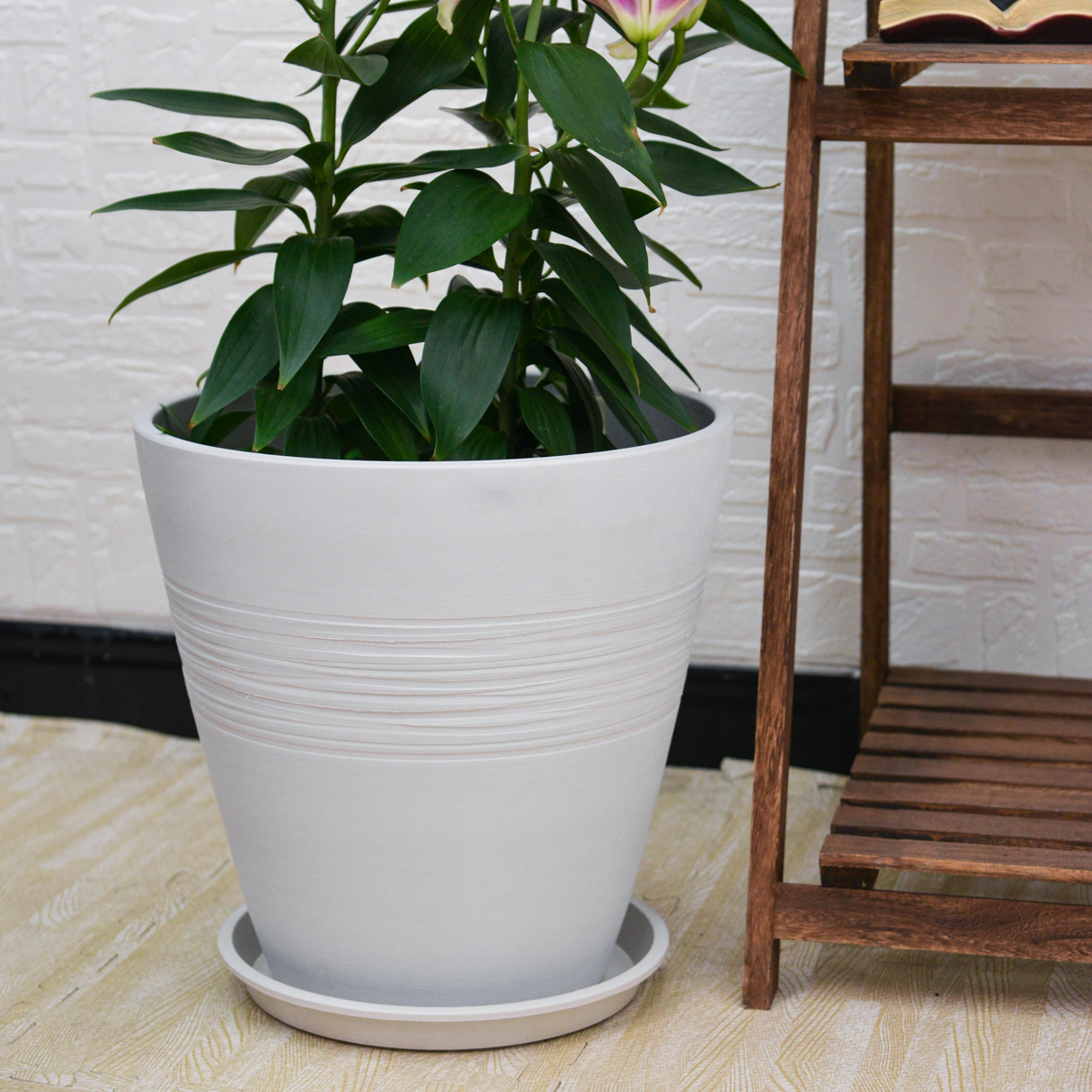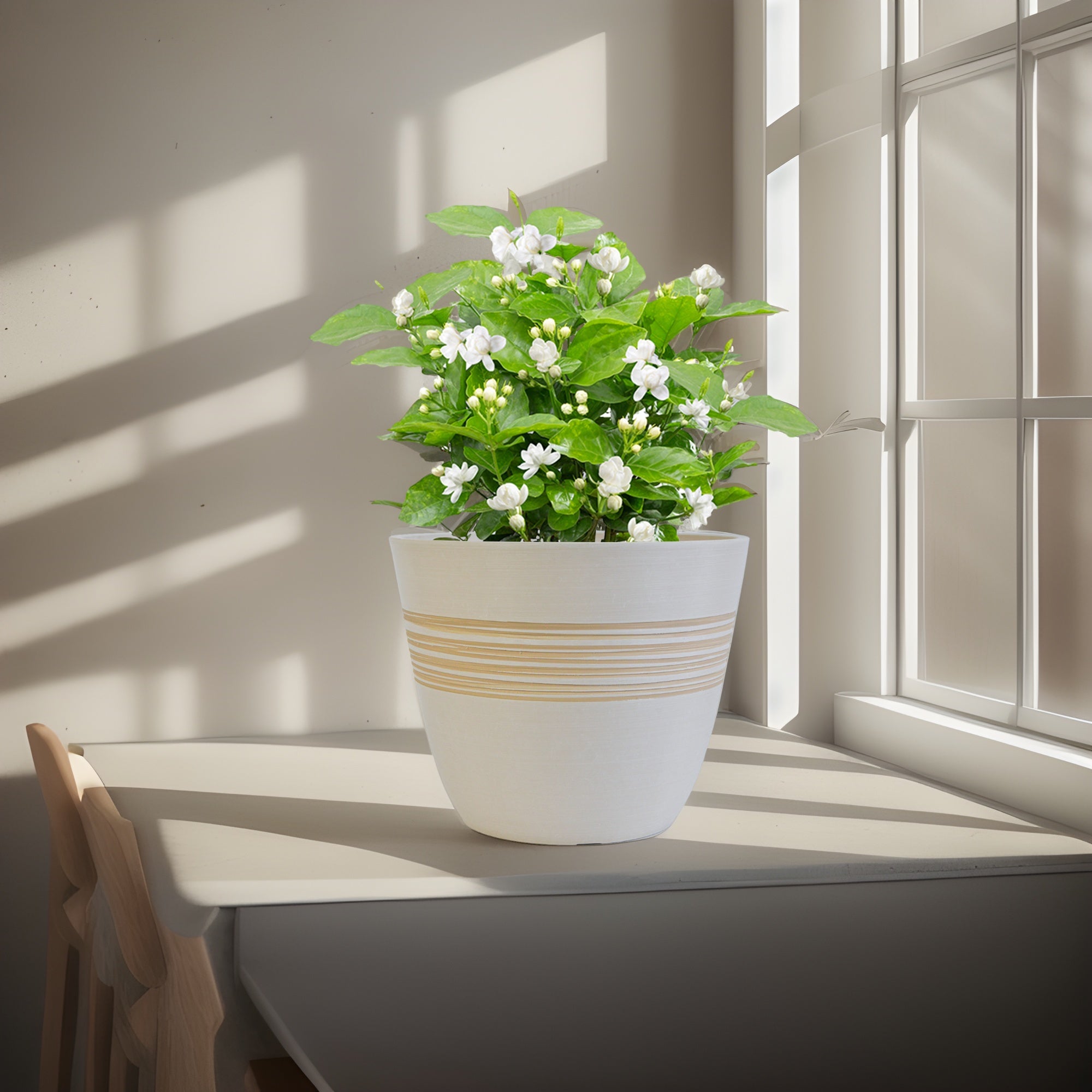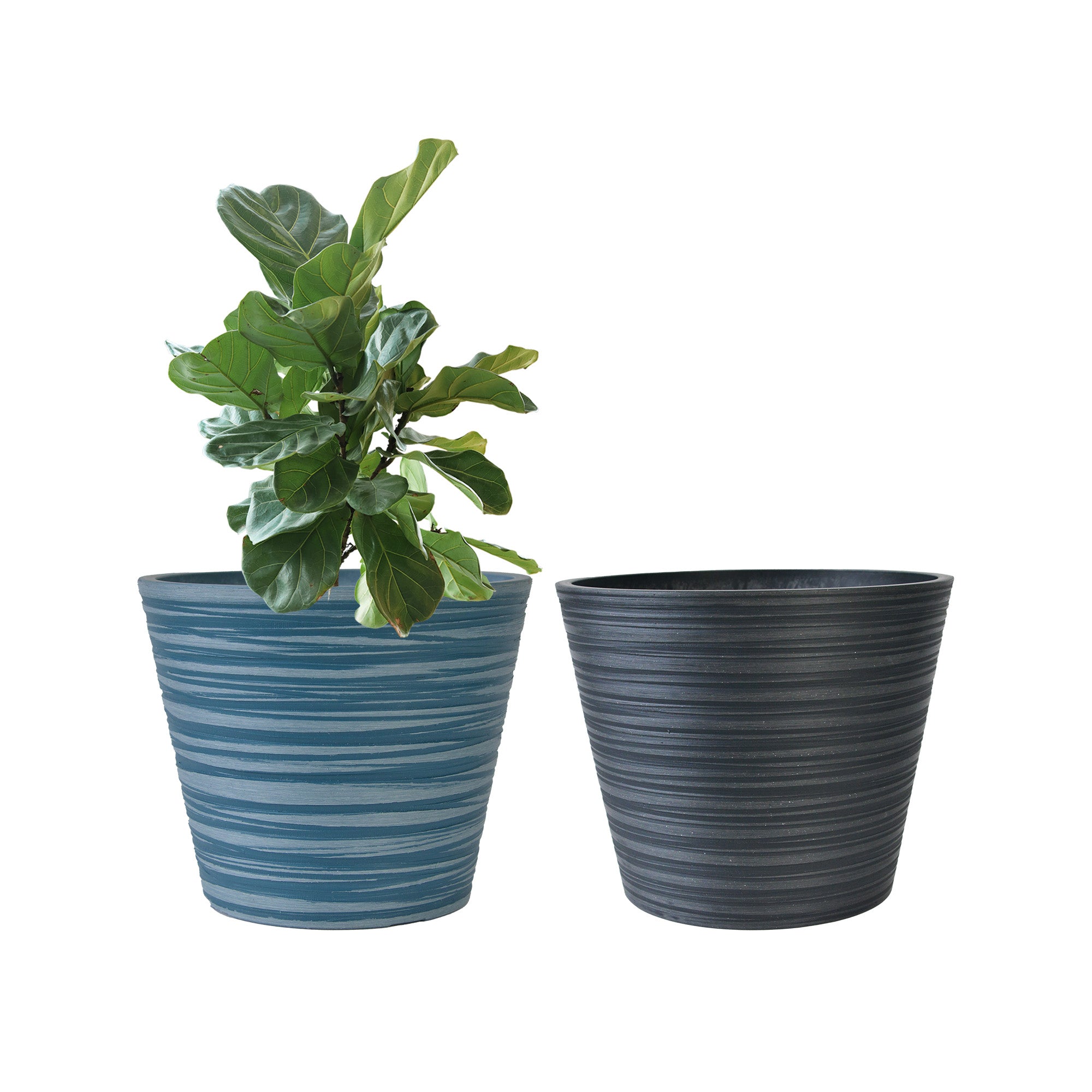Succulents in Pots: The Complete Guide to Growing Beautiful & Low-Maintenance Plants Outdoors in Containers
Want to add architectural interest, drought-tolerant beauty, and unique textures to your sunny patio, balcony, or garden? Growing succulents in containers is a wonderfully easy and rewarding way to cultivate these fascinating plants, even in urban environments or for beginner gardeners. Celebrated for their diverse shapes, colors, and textures, their water-wise nature, their low-maintenance care, and their adaptability to container gardening, succulents are perfect for adding a touch of modern elegance and enduring greenery to your outdoor living spaces. This comprehensive guide will provide you with everything you need to know to grow succulents successfully in outdoor pots, from selecting the best varieties and containers to mastering essential care techniques for thriving succulent container gardens.
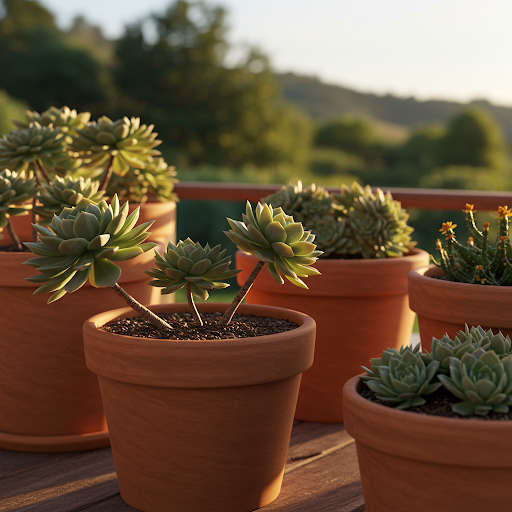
succulents
What are Succulents?
Succulents are plants with thickened, fleshy leaves, stems, and/or roots that are adapted to store water in arid or semi-arid environments. The term “succulent” comes from the Latin word sucus, meaning “juice” or “sap”. Succulents are not a single taxonomic group, but rather a diverse group of plants from many different botanical families that have independently evolved succulence as an adaptation to dry conditions. They are found all over the world, but are particularly diverse in arid and semi-arid regions of Africa, the Americas, and parts of Asia. Succulents are popular ornamental plants grown for their unique shapes, textures, and colors, their drought tolerance, and their low-maintenance nature. Succulent plants are characterized by their water-storing tissues, varied forms (rosettes, upright, trailing, spherical, columnar), diverse foliage colors (greens, blues, reds, purples, silvers, variegated), and often striking architectural shapes. They exhibit a wide range of growth habits, from ground-hugging rosettes to tall, tree-like forms, depending on the species and genus. They are known for their drought resistance, ease of propagation, adaptability to container gardening, and ornamental appeal, making them an invaluable addition to home gardens and containers, especially for sunny, low-water landscapes and indoor plant collections.
Are Succulents Good for Outdoor Pots?
Yes, succulents are exceptionally well-suited for outdoor pots and container gardening, and are in fact one of the most popular plant choices for container cultivation, especially for sunny patios, balconies, decks, and drought-tolerant gardens. Their drought tolerance, slow growth rate, diverse shapes and sizes, and striking foliage make them ideal for creating visually appealing and low-maintenance container arrangements. Growing succulents in pots offers several advantages:
- Excellent Drainage Control: Containers allow you to provide the fast-draining soil mix that succulents need to thrive and prevent root rot, which is crucial for their health.
- Portability: Potted succulents can be easily moved to optimal locations for sunlight, shelter from rain (especially in winter for less hardy types), or to create seasonal displays.
- Design Flexibility: Succulents in pots offer endless creative possibilities for container arrangements, allowing you to combine different colors, textures, and forms in visually striking compositions.
- Pest and Disease Management: Container growing can help reduce some soilborne pest and disease issues that can affect succulents in the ground.
- Protection from Harsh Weather: Pots can be moved indoors or to sheltered locations to protect less hardy succulents from frost, excessive rain, or intense summer heat, depending on the species.
- Ideal for Small Spaces: Succulents in pots are perfect for patios, balconies, and small gardens where space is limited.
Ideal Growing Conditions for Succulents in Pots:
Types of Succulents for Pots: Many succulent genera and species are excellent for container gardening. Consider these popular choices:
- Echeveria: Rosette-forming succulents with diverse colors and forms. Very popular for pots due to their beauty and ease of care. Examples: Echeveria elegans, Echeveria ‘Afterglow’, Echeveria ‘Perle von Nürnberg’.
- Sedum (Stonecrop): Diverse genus with groundcover, upright, and trailing forms. Many are cold-hardy and excellent for outdoor pots. Examples: Sedum spurium, Sedum rupestre, Sedum morganianum (Burro’s Tail).
- Sempervivum (Hens and Chicks): Rosette-forming, very cold-hardy, excellent for rock gardens and pots. Examples: Sempervivum tectorum, Sempervivum ‘Pacific Blue Ice’.
- Crassula: Diverse genus with varied forms, including shrubby, trailing, and rosette types. Examples: Crassula ovata (Jade Plant), Crassula argentea (Silver Dollar Plant), Crassula perforata (String of Buttons).
- Aloe: Architectural rosettes with fleshy, often toothed leaves. Many are well-suited for pots. Examples: Aloe vera, Aloe aristata, Aloe ‘Pink Blush’.
- Agave: Dramatic rosettes with sharp, pointed leaves. Choose smaller agave species for containers. Examples: Agave parryi, Agave victoriae-reginae, dwarf agave varieties.
- Haworthia & Gasteria: Smaller, often patterned rosette succulents, good for part shade and pots. Examples: Haworthia fasciata (Zebra Plant), Gasteria bicolor.
- Kalanchoe: Diverse genus with varied foliage and flower forms. Examples: Kalanchoe tomentosa (Panda Plant), Kalanchoe blossfeldiana (Flaming Katy).
- Senecio: Diverse genus with trailing, upright, and unusual forms. Examples: Senecio rowleyanus (String of Pearls), Senecio mandraliscae (Blue Chalk Sticks), Senecio vitalis (Mermaid Tail).
- Euphorbia: Diverse genus, some succulent species resemble cacti. Be aware of milky sap, which can be irritating. Examples: Euphorbia tirucalli (Pencil Cactus), Euphorbia milii (Crown of Thorns).
- Cacti (Cactaceae family): While technically a separate family, cacti are also succulents and thrive in similar conditions. Choose smaller, container-friendly cacti. Examples: Mammillaria, Rebutia, Opuntia microdasys(Bunny Ears Cactus), Cereus peruvianus ‘Monstrosus’ (small specimens).
Light: Most succulents need bright, indirect to full sun. Many thrive in full sun outdoors, especially in the morning and afternoon. Some succulents, particularly those with more delicate foliage or those prone to sunburn, may appreciate some afternoon shade in very hot, intense sun conditions. Provide at least 6 hours of sunlight per day for most succulents. Insufficient light can lead to etiolation (stretched, leggy growth) and faded colors. South-facing patios or balconies are ideal sunny locations. Observe your succulents and adjust their location if they show signs of sunburn (scorched spots) or etiolation (stretching).
Soil: Excellent drainage is absolutely critical for succulents to prevent root rot, which is their primary enemy. Use a special succulent and cactus potting mix. These mixes are formulated to be very fast-draining and gritty. If using a general potting mix, amend it heavily with perlite, pumice, or coarse sand (horticultural sand, not fine beach sand) to improve drainage. Aim for a mix that is about 50-75% inorganic grit (perlite, pumice, sand) and 25-50% organic matter (potting mix, coco coir). Avoid moisture-retentive potting mixes or garden soil, which will hold too much water and lead to root rot. Succulents prefer slightly acidic to neutral pH (around 6.0-7.0).
Watering: Water succulents sparingly and allow the soil to dry out thoroughly between waterings. The “soak and dry” method is ideal: water deeply until water drains out of the drainage holes, then allow the soil to become almost completely dry before watering again. Overwatering is the most common mistake in succulent care and leads to root rot. Water less frequently during dormant periods (winter for many succulents) and more frequently during active growth periods (spring and summer). Watering frequency will depend on weather conditions, pot size, succulent type, and time of year. Check soil moisture regularly with your finger or a moisture meter before watering. Err on the side of underwatering rather than overwatering. Avoid overhead watering if possible, as water sitting on leaves can promote rot, especially for rosette-forming succulents. Water at the base of the plant or use a watering can with a long spout.
Temperature: Succulents are adapted to a wide range of temperatures, but most thrive in warm, dry conditionsduring their growing season (spring and summer). Ideal temperatures are generally between 70°F to 90°F (21°C to 32°C) during the day and slightly cooler at night. Many succulents can tolerate high heat as long as they have adequate ventilation and are not overwatered. Cold hardiness varies greatly depending on the succulent species. Some succulents, like Sempervivum and some Sedum species, are very cold-hardy and can tolerate freezing temperatures. Other succulents, like Echeveria and Crassula ovata, are frost-tender and need to be protected from freezing temperatures. Know the cold hardiness of your specific succulents and provide appropriate winter protection if needed (moving pots indoors or to a sheltered location). Singapore’s warm climate is generally suitable for many warm-climate succulents, but be mindful of providing some protection from very heavy rainfall, especially for succulents that are more prone to rot.
Fertilizer: Succulents are light feeders and do not require heavy fertilization. In fact, over-fertilizing can lead to weak, leggy growth and less vibrant colors. Fertilize sparingly, if at all. If desired, you can apply a dilute balanced liquid fertilizer (e.g., 10-10-10 or succulent-specific fertilizer) diluted to quarter or half strength, once or twice during the active growing season (spring/summer). Avoid fertilizing during dormant periods (winter). For containers, occasional light feeding (e.g., once in spring and once in mid-summer) may be beneficial, especially if using a very well-draining, low-nutrient potting mix. Alternatively, you can incorporate a small amount of slow-release granular fertilizer into the potting mix at planting time. Avoid high-nitrogen fertilizers, which can promote weak growth. In general, succulents prefer slightly lean soil and do not need rich, heavy fertilization.
Choosing the Right Pots for Succulents:
Suitable Pot Types: Drainage is paramount for succulents, so choose pots that provide excellent drainage. Suitable pot types include:
- Terracotta Pots: Porous, allow excellent aeration and drainage, and aesthetically classic and earthy, complementing the natural beauty of succulents. Terracotta is an excellent choice for succulents as it helps prevent overwatering and promotes healthy root systems. Terracotta pots also dry out more quickly, which is beneficial for succulents.
- Ceramic Pots: Glazed or unglazed ceramic pots can be used, but ensure they have drainage holes. Unglazed ceramic is more porous than glazed. Choose based on your desired aesthetic and drainage needs. Ensure good drainage.
- Plastic Pots: Lightweight, inexpensive, and available in various colors and styles. Plastic pots can be used for succulents, but be extra careful not to overwater, as plastic retains moisture more than terracotta. Choose good quality plastic pots with drainage holes.
- Resin Pots: Lightweight, durable, available in various styles mimicking terracotta or ceramic, and offer a balance of drainage and moisture retention. Resin pots can be used, but again, be mindful of watering, as they retain moisture more than terracotta.
- Concrete Pots: Heavy and sturdy, provide good stability for larger succulents, and offer a modern, minimalist aesthetic. Concrete pots are porous and offer good drainage, but can be very heavy to move.
Drainage: Excellent drainage is absolutely essential for succulents to prevent root rot. Ensure your chosen pot has drainage holes at the bottom. Avoid pots without drainage holes. For pots without pre-drilled drainage holes, you can drill your own using a masonry drill bit (for terracotta or ceramic). Adding a generous layer of drainage material at the base of the pot (e.g., gravel, pot shards, clay pebbles) is often recommended to further improve drainage, especially in heavier pots or if you tend to overwater. However, some experts argue that a drainage layer is not necessary if using a very well-draining succulent mix and proper watering techniques. Elevating pots slightly on pot feet or bricks can further improve drainage and air circulation around the base.
Pot Size: Choose pot sizes appropriate for the mature size and growth habit of the succulent you are planting, and the desired visual impact. Succulents generally prefer to be slightly root-bound, so avoid overly large pots, which can retain too much moisture. Start with a pot that is slightly larger than the succulent’s root ball, and repot only when the succulent becomes significantly root-bound.
- Small Pots (Small Rosettes, Cuttings, Seedlings): For small rosette succulents, cuttings, or seedlings, use pots that are at least 3-4 inches in diameter and depth.
- Medium Pots (Most Individual Succulents, Combinations): For most individual succulents or for creating mixed succulent arrangements, use pots that are 4-8 inches in diameter or larger, depending on the size of the succulent and the desired arrangement.
- Large Pots (Larger Succulents, Statement Plants): For larger succulent species like agaves, larger aloes, or mature jade plants, use pots that are 10 inches in diameter or larger, and deep enough to accommodate their root systems and provide stability.
Color and Style: Choose pot colors and styles that complement your succulents and your outdoor décor, and enhance their unique forms and colors. Neutral colors like terracotta, white, gray, black, or earthy tones often work well, allowing the succulents to be the focal point. Brightly colored pots can also be used to create a more vibrant and playful display, especially with succulents that have more muted foliage colors. Modern, minimalist, rustic, or geometric pot styles can all complement different succulent types and garden styles. Consider the overall style of your patio or garden and choose pots that harmonize with the surroundings, and enhance the aesthetic you wish to create. Grouping pots of varying heights, sizes, and styles can create a visually interesting succulent container garden.
Essential Care Tips for Thriving Succulents in Outdoor Pots:
- Watering: “Soak and Dry” Method. Water Sparingly, Allow Soil to Dry Completely Between Waterings. Avoid Overwatering. Water deeply and thoroughly when the soil is dry, then allow the soil to dry out almost completely before watering again. Overwatering is the biggest risk for succulents in pots.
- Sunlight: Provide Bright, Indirect to Full Sun (6+ Hours Daily). Place succulent pots in a location that receives bright, indirect to full sun for optimal growth and vibrant colors. Provide afternoon shade in very hot, intense sun if needed.
- Soil: Use Well-Draining Succulent/Cactus Mix. Amend with Perlite/Pumice. Use a fast-draining succulent and cactus potting mix. Amend regular potting mix with perlite or pumice to improve drainage.
- Fertilizing: Fertilize Sparingly (Once or Twice in Growing Season, Diluted). Fertilize sparingly, if at all. If desired, use a dilute balanced or succulent-specific fertilizer once or twice during the spring/summer growing season. Avoid over-fertilizing.
- Drainage: Ensure Excellent Drainage. Pots with Drainage Holes are Essential. Use pots with drainage holes. Add drainage material to the base of pots if desired. Elevate pots slightly to improve drainage.
- Air Circulation: Provide Good Air Circulation. Good air circulation helps prevent fungal diseases and promotes healthy growth, especially in humid climates. Space pots adequately and avoid overcrowding.
- Pest and Disease Control: Succulents are generally relatively pest and disease-resistant, but monitor for occasional pests like mealybugs, aphids, spider mites, and scale. Root rot is the most common disease issue, caused by overwatering and poor drainage. Use organic pest control methods if needed, such as insecticidal soap or horticultural oil. Prevent root rot by ensuring excellent drainage and proper watering practices.
- Winter Protection (for Frost-Tender Succulents): Know the cold hardiness of your succulents. Protect frost-tender succulents from freezing temperatures by moving pots indoors or to a sheltered location before the first frost. Cold-hardy succulents can generally remain outdoors in pots in mild winter climates, but may benefit from some protection from excessive winter moisture in very rainy areas.
Popular Succulent Genera for Pots (by Type/Form/Color):
- Rosette Forming: Echeveria, Sempervivum, Aeonium, Haworthia, Aloe, Agave.
- Trailing/Hanging: Sedum morganianum (Burro’s Tail), Senecio rowleyanus (String of Pearls), Sedum burrito (Baby Burro’s Tail), Crassula rupestris (String of Buttons).
- Upright/Columnar: Cereus, Euphorbia tirucalli (Pencil Cactus), Sansevieria (Snake Plant – though technically rhizomatous, often grown upright).
- Colorful Foliage: Echeveria (many colors), Sedum (reds, purples, golds), Aeonium (burgundies, purples, greens), Graptopetalum (pastel shades), Kalanchoe (red edges, variegated).
- Textural: Crassula perforata (String of Buttons), Haworthia fasciata (Zebra Plant), Aloe aristata (lace aloe), Euphorbia obesa (Baseball Plant).
In Summary:
Growing succulents in outdoor pots is a wonderfully rewarding way to create stunning, low-maintenance container gardens that thrive in sunny locations. Their diverse forms, colors, and textures offer endless design possibilities, while their drought tolerance and easy care make them perfect for busy gardeners or those in dry climates. By providing excellent drainage, a gritty succulent mix, bright sunlight, sparing watering, and choosing pot sizes and styles that showcase their unique beauty, you can easily cultivate thriving succulent container gardens and enjoy their architectural elegance and enduring charm in your outdoor living spaces for years to come.

succulents
For more detailed botanical information and to explore the vast world of succulents, you can visit the Wikipedia page on Succulent plant.
Important Note: Succulents are generally considered non-toxic to humans and pets, but some species may have mildly irritating sap or spines. Always handle succulents with care, especially when pruning or repotting. The primary care benefits of succulents in pots are their low-maintenance nature, drought tolerance, architectural beauty, diverse forms and colors, ease of propagation, and adaptability to container gardening, bringing enduring greenery and unique visual interest to your outdoor spaces with minimal effort. With these simple care practices, you can enjoy the captivating world of succulents in your outdoor containers.
Plant Pots 6 inch 8 inch 12 inch for Indoor Outdoor Plants, Set of 3 Modern Decorative Planter with Drainage Hole, Decorative Flower Pots
By greenship-seo|2025-04-10T06:38:40+00:00January 16, 2025|Categories: Hand-carving Series|Tags: Decorative Flower Pots|
13 inch Planter for Indoor Plants, Set of 2 Modern Decorative Plant Pots with Drainage Hole, Cute Bowl Shape Flower Pots
By greenship-seo|2025-04-10T07:41:46+00:00January 10, 2025|Categories: Hand-carving Series|Tags: Decorative Flower Pots, Self-Watering Pots|
KC2-GS
By greenship|2024-08-16T06:30:21+00:00August 16, 2024|Categories: Hand-carving Series|
Planter for Indoor Outdoor Plants, Set of 2 Modern Decorative Plant Pots with Drainage Hole, Decorative Flower Pots
By greenship-seo|2025-04-10T07:46:01+00:00January 9, 2025|Categories: Hand-carving Series|Tags: Decorative Flower Pots, Self-Watering Pots|
KC3-14A
By greenship|2024-08-16T06:26:30+00:00August 16, 2024|Categories: Hand-carving Series|
Planter 5 in W / 8 in W / 12 in W or Indoor Outdoor Plants, Modern Decorative Plant Pots with Drainage Hole, Decorative Flower Pots
By greenship-seo|2025-04-10T06:37:58+00:00January 16, 2025|Categories: Hand-carving Series|Tags: Decorative Flower Pots|

